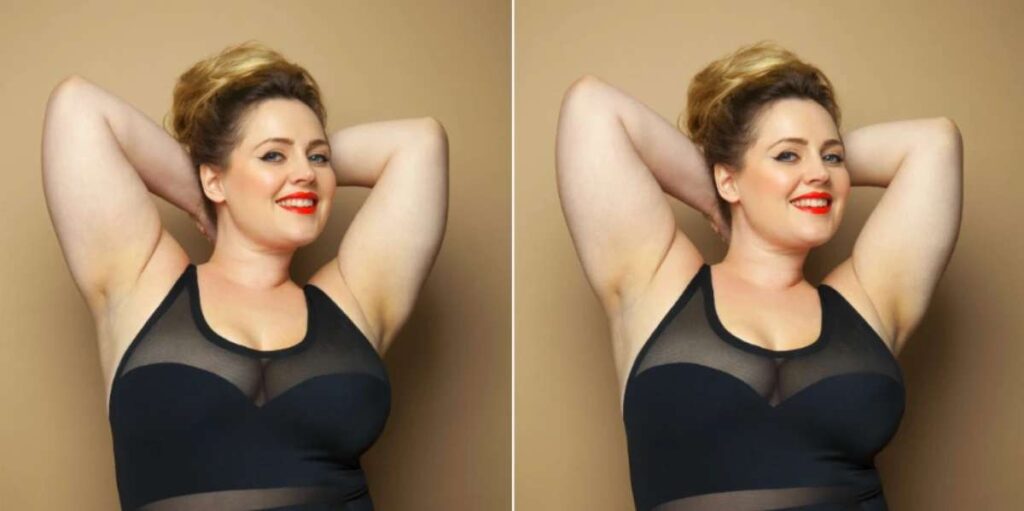Puffy nipples, a condition characterized by the swelling or enlargement of the nipple area, can affect both men and women. While this topic may evoke some discomfort or embarrassment, it is essential to approach it objectively and with understanding. Imagine looking at a serene lake on a calm day; its surface appears smooth and undisturbed. Similarly, we desire that our bodies reflect harmony and balance. However, for individuals with puffy nipple, this tranquility may be disrupted.
The causes of puffy nipples vary greatly and can stem from hormonal imbalances, excessive fat accumulation in the chest area, or certain medical conditions. In order to address this concern effectively, it is crucial to understand the underlying factors contributing to its development.
In this article, we will explore five common causes of puffy nipple in both men and women. By delving into the scientific research surrounding this issue, we aim to provide clarity and accurate information about this condition. Additionally, we will discuss potential solutions for those seeking guidance on how to rid themselves of puffy nipples.
Key Takeaways
- Puffy nipples can affect both men and women.
- Causes of puffy nipples include genetics, hormonal imbalances, certain exercise routines, excess body fat, and medications/recreational drug use.
- Ways to reduce the appearance of puffy nipples include getting hormone levels checked, improving diet and exercise routines, and considering surgical procedures.
- Surgical procedures like liposuction or excision of fibrous fatty tissue can be an option.
5 Causes Of Puffy Nipples In Men and Women

This paragraph discusses the causes of puffy nipples in both men and women. One possible cause is genetics, as certain individuals may have a genetic predisposition to developing puffy nipples. Hormonal imbalances can also contribute to this condition, as fluctuations in estrogen and testosterone levels can affect breast tissue. Additionally, certain exercise routines that focus on chest muscles may lead to the development of puffy nipples due to excessive muscle growth.
Excess body fat can also contribute to this condition, as it can accumulate around the nipple area. Lastly, medications or recreational drug use may play a role in causing puffy nipples by affecting hormone levels or leading to water retention in breast tissue.
1. Genetics
Genetics play a significant role in the development of puffy nipples, as individuals who are genetically predisposed may start to notice this physical characteristic during puberty or their teenage years. Puffy nipples, characterized by swollen or enlarged nipple tissue, can affect both men and women. While not always hereditary nor predictable, puffy nipples are commonly caused by our genetic makeup. Those who have a genetic predisposition towards puffy nipples will often observe their nipples becoming puffier with age. This condition is more prevalent during puberty when hormonal changes occur.
Although puffy nipples can cause self-consciousness and discomfort for some individuals, it is important to note that they are usually harmless and do not pose any health risks. Understanding the genetic basis of puffy nipples can help individuals better cope with and accept this natural variation in body appearance.
2. Hormones
Hormonal shifts can manifest in physical changes, such as the swelling and enlargement of areolas, serving as an indicator of underlying hormonal imbalances. These imbalances can be seen in both men and women.
Specifically, women may experience puffy nipple during pregnancy or as a part of their monthly menstrual cycle. This is commonly attributed to hormonal fluctuations that occur during these periods. On the other hand, men with lower levels of testosterone may also develop puffy nipples.
In some cases, this may be a symptom of gynecomastia, which involves the enlargement of breast tissue in males. Hormonal changes during puberty and later years can also contribute to the development of puffy nipple. While most individuals only experience this temporarily as they transition between hormonal stages, it is important to note that persistent or severe cases should be evaluated by a healthcare professional.
1) Swelling and enlargement of areolas serve as indicators for underlying hormonal imbalances.
2) Women often experience puffy nipple during pregnancy or their menstrual cycle due to hormone fluctuations.
3) Men with lower testosterone levels may develop puffy nipples, which could indicate gynecomastia.
4) Puffy nipples can occur during puberty or later years due to changing hormone levels.
3. Certain exercise routines
Exercise routines that involve repetitive movements and high levels of friction between clothing and the chest area can lead to temporary swelling and puffiness in the breast region. This phenomenon, commonly known as “puffy nipples,” occurs due to the irritation caused by the constant rubbing of clothing against sensitive nipple skin during activities such as running or cardio workouts. The friction can result in inflammation and fluid retention, causing a temporary enlargement of the nipples.
However, it is important to note that this condition is usually harmless and should resolve on its own over time. To alleviate discomfort, individuals may consider wearing appropriate sports bras or applying lubricants or bandages to reduce friction. It is advisable to consult a healthcare professional if any persistent swelling or pain occurs.
4. Excess body fat
Excess body fat can significantly impact the appearance of the breasts, altering their shape and contour over time. When an individual gains weight, excess adipose tissue accumulates in various parts of the body, including the breasts. As a result, the increased fat deposits can cause the breasts to become larger and heavier. This excess weight can lead to a stretching effect on the skin and connective tissues supporting the breasts, resulting in sagging and a loss of firmness.
Additionally, excessive body fat can contribute to an increase in breast size overall, including both glandular tissue and fatty tissue. These changes may also affect the nipples, causing them to appear more prominent or “puffy.” Overall, excess body fat plays a significant role in altering the appearance of breasts by affecting their size, shape, and nipple characteristics.
5. Medications or recreational drug use
Drugs and medications, both prescription and recreational, have been identified as potential factors that can contribute to changes in the appearance of the breasts, including alterations in nipple characteristics. Certain cardiovascular drugs, antipsychotics, antiandrogens, and antifungal medications have been reported to cause puffy nipples as a side effect.
Additionally, anabolic steroids have been linked to hormone imbalance during puberty which can result in puffy nipples. Marijuana use has also been suggested as a possible contributing factor. It is important to note that these substances may not directly cause puffy nipples but rather contribute to hormonal imbalances or other physiological changes that can lead to this condition.
Therefore, it is crucial for individuals experiencing changes in nipple appearance to consult with a healthcare professional who can evaluate their specific situation and provide appropriate guidance and treatment options.
- Some medications that have been associated with puffy nipples include:
- Cardiovascular drugs
- Antipsychotics
- Antiandrogens
- Antifungal medications
- Recreational drug use such as marijuana has also been linked to an increased chance of developing puffy nipples.
It is recommended that individuals who suspect medication or drug use may be contributing to their nipple changes discuss their concerns with a healthcare provider for further evaluation and guidance.
How to Get Rid of Puffy Nipples

This discussion will focus on ways to reduce the appearance of puffy nipples in men and women. One approach is to get your hormones checked, as hormonal imbalances can contribute to this condition.
Additionally, improving your diet and exercise routine may help decrease excess tissue in the nipple area.
Lastly, surgical procedures are available for those who desire a more permanent solution. It is important to approach this topic objectively and provide information that is clear and accurate.
1. Get your hormones checked
Hormonal imbalances should be considered as a potential underlying cause for the condition of puffy nipples. It is important to get your hormones checked by a medical professional to determine if they are playing a role in the appearance of your nipples. Here are three key factors to consider:
- Estrogen levels: Elevated estrogen levels can lead to gynecomastia, which is the enlargement of breast tissue in males. This can result in puffy nipples.
- Testosterone levels: Low testosterone levels can contribute to hormonal imbalances and may also be associated with gynecomastia.
- Thyroid function: An underactive thyroid gland, known as hypothyroidism, can disrupt hormone production and potentially cause changes in breast tissue.
By assessing these hormonal markers, your doctor can identify any abnormalities that may be contributing to your puffy nipples and develop an appropriate treatment plan tailored to your specific needs.
2. Improve your diet and exercise routine
To address the issue of puffy nipples, it is crucial to consider various factors that contribute to this condition. While hormonal imbalances were discussed previously, another significant aspect to focus on is improving one’s diet and exercise routine. As mentioned in the background information, weight gain, particularly among men, can lead to the development of puffy nipples.
Therefore, adopting a healthier diet aimed at achieving a sustainable weight is essential. This may involve reducing caloric intake and opting for nutrient-dense foods. Additionally, incorporating exercises that target the chest muscles can have a transformative effect on body appearance. Strengthening these muscles through targeted exercises not only helps reduce excess fat but also enhances muscle tone and definition in the chest area.
By combining a balanced diet with appropriate exercise routines, individuals can work towards addressing and minimizing the appearance of puffy nipples effectively.
3. Surgical procedures
One potential solution for addressing the issue of puffy nipples is through surgical procedures, which can involve techniques such as liposuction or excision of fibrous fatty tissue. Liposuction may be successful if the skin is tight and there is only excess fatty tissue in the chest. The skin needs to have enough elasticity to retract against the chest wall for this procedure to work effectively. In cases where more fibrous fatty tissue is present, a small incision may be necessary to excise it.
It is important to note that surgical procedures should only be considered after other options, such as improving diet and exercise routine, have been explored. Additionally, individuals experiencing discharge or discomfort should seek immediate medical attention as these symptoms may indicate an underlying condition that requires treatment.

Frequently Asked Questions
Are puffy nipples a normal occurrence during puberty?
Yes, puffy nipples are a normal occurrence during puberty. They are caused by hormonal changes and usually resolve on their own over time. It is important to note that each individual’s experience may vary.
Can hormonal imbalances lead to the development of puffy nipples?
Hormonal imbalances can lead to various physical manifestations, such as changes in breast tissue. These imbalances may result in the development of swollen or enlarged nipples, commonly referred to as “puffy nipples.”
Is weight loss an effective method to reduce the appearance of puffy nipples?
Weight loss can potentially reduce the appearance of puffy nipples. When a person loses weight, it often results in a decrease in overall body fat, which could lead to a reduction in excess fatty tissue around the nipples.
Can certain medications or medical conditions contribute to the formation of puffy nipples?
Certain medications, such as certain psychiatric drugs and hormone therapies, may contribute to the development of gynecomastia, a condition that can cause the appearance of puffy nipples. Additionally, medical conditions like hormonal imbalances can also lead to this aesthetic concern.
Are there any natural remedies or exercises that can help reduce puffy nipples?
Natural remedies or exercises have not been proven to effectively reduce puffy nipples. Medical intervention, such as surgery or hormone therapy, may be necessary to address this condition. Consultation with a healthcare professional is recommended for appropriate treatment options.
Conclusion
Puffy nipples, a condition that affects both men and women, can be caused by various factors. Hormonal imbalances, such as an excess of estrogen or testosterone, can lead to the development of puffy nipples. Gynecomastia, a condition characterized by the enlargement of breast tissue in men, is another common cause. Additionally, certain medications and underlying medical conditions can contribute to this issue. To address puffy nipples, individuals may consider lifestyle modifications, hormone therapy, or surgical interventions like liposuction or breast reduction surgery.
In conclusion, puffy nipples can be a distressing condition for both men and women. The causes range from hormonal imbalances to medication side effects and underlying medical conditions. Fortunately, there are various treatment options available to help alleviate this concern. From lifestyle changes to surgical interventions like liposuction or breast reduction surgery, individuals have choices when it comes to addressing puffy nipples.
By seeking appropriate medical advice and considering these options, individuals can regain confidence and feel more comfortable in their own skin.


















